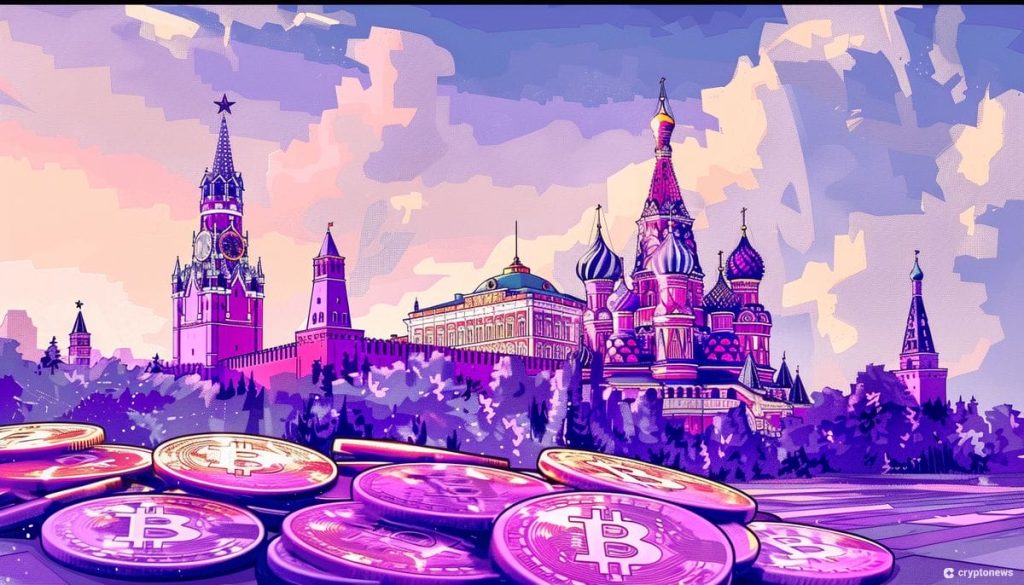The Russian Central Bank has observed an increase in citizens’ transactions on crypto exchanges and peer-to-peer trading platforms. The bank’s financial stability report, covering the fourth quarter of FY2023 to the first quarter of FY2024, highlighted a 16.4% rise in web traffic on major cryptocurrency platforms by Russian users. The number of visits to crypto exchanges and P2P sites totaled 104.6 million, with a 15.1% increase in unique Russian IP address-holders on major exchanges. Despite the increase, Russian activity on these platforms is still below the peak seen in the first quarter of FY2023.
The report also indicated that Russians continue to show interest in major cryptocurrencies like Bitcoin and Ethereum, as well as USD-pegged stablecoins such as USDT and USDC. Transactions potentially linked to Russian users amounted to over $50.2 billion in the same period, covering not just trades but also P2P payments, remittances, and payments for goods and services. The report highlighted the risks associated with holding crypto in Russia, particularly in light of potential sanctions from unfriendly countries which could lead to loss of access to funds.
In response to the rising crypto activity, the Russian Parliament has proposed a ban on the organization of cryptocurrency circulation in Russia effective September 1, 2024, as well as a ban on cryptocurrency advertising. Only miners and projects approved by the Central Bank would be allowed to operate in the country. The Central Bank’s recommendation to domestic financial organizations includes not offering financial instruments tied to cryptoassets and refraining from advertising services related to cryptocurrency circulation. The bank’s cautionary stance is likely influenced by recent sanctions imposed on Russia by the US targeting crypto-related entities and individuals.
The report did not disclose the specific crypto platforms monitored by the Central Bank, but previous reports have included data from platforms like Binance, Bybit, MEXC, and KuCoin. The spike in crypto transactions may be linked to Binance’s exit from the Russian market, where it held a significant share. The bank’s warning of the risks associated with holding crypto in Russia extends to the potential impacts of geopolitical tensions and the tightening regulatory environment surrounding stablecoins. As regulators in the US and UK increase scrutiny on stablecoin transactions, the Russian Central Bank anticipates possible restrictions on user transactions and the need for Russian financial organizations to adapt to forthcoming regulations.
In conclusion, the Russian Central Bank’s monitoring of citizens’ crypto transactions reflects the growing interest in cryptocurrencies in the country despite regulatory uncertainties and geopolitical risks. The proposed ban on cryptocurrency circulation, combined with the warning about potential sanctions impacting access to funds, underscores the need for caution in the crypto space. As global regulators tighten controls on stablecoins and user transactions, financial organizations in Russia are advised to prepare for potential regulatory changes affecting cryptoassets. The evolving landscape of cryptocurrency regulation and the impact of geopolitical events on the crypto market will likely continue to shape the behavior of Russian investors in the coming months.


